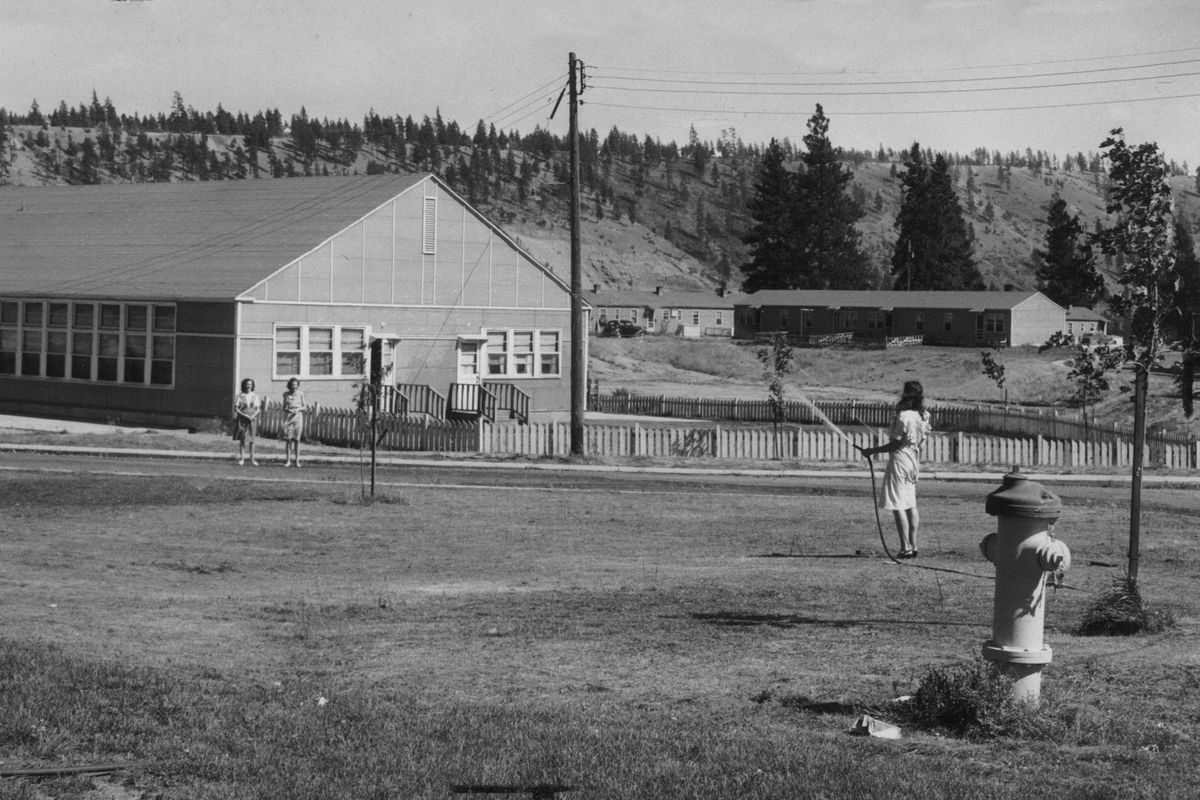Then and Now: Victory Heights

The U.S. Army built a housing project, Garden Springs Terrace, along the Sunset Highway west of town from 1940-42. The homes were tidy, two-bedroom cottages for personnel working at Geiger Field.
But at the height of World War II, Spokane had a severe housing shortage. A state labor report estimated that Spokane expanded by 70,000 service members, civilian workers and their family members during the war. Thousands of workers were needed at Henry Kaiser’s Mead and Trentwood aluminum plants.
In 1943, the military began building dozens of barracks-style, four-unit buildings, stretching from the Garden Springs neighborhood eastward to Hangman Creek. The development was called Victory Heights. There was a similar project in Hillyard, bounded by Cook and Market streets, between Empire and Rich avenues. That development was named Coplen Park. Each neighborhood had several hundred units, lined up on dusty, unpaved roads.
The housing filled up with tenants, including veterans returning from war. By the time the war was over, there were 1,250 housing units at Coplen Park and Victory Heights.
The neighborhoods held beautification contests to encourage residents to landscape their yards and stave off shabbiness. In 1953, units rented for $33-$39 per month.
After the war, the hastily built housing units, which did not meet city building codes, were managed by the federal Public Housing Authority.
As the city annexed new areas, there was pressure to update or remove the barracks housing. Tenancy dropped as military activity declined and people moved away or found other housing. In 1953, the developments were only half full, with buildings falling into disrepair but still housing hundreds of mostly poor families.
PHA management stopped renting to new tenants and sent out six-month notices to vacate in 1953.
The city debated whether to tear down the sub-standard structures or keep it to house the poor. The federal government declared both housing projects to be surplus in 1954. The buildings were sold to be moved in 1958 and the land was sold off in parcels. There are few traces of these neighborhoods left today.